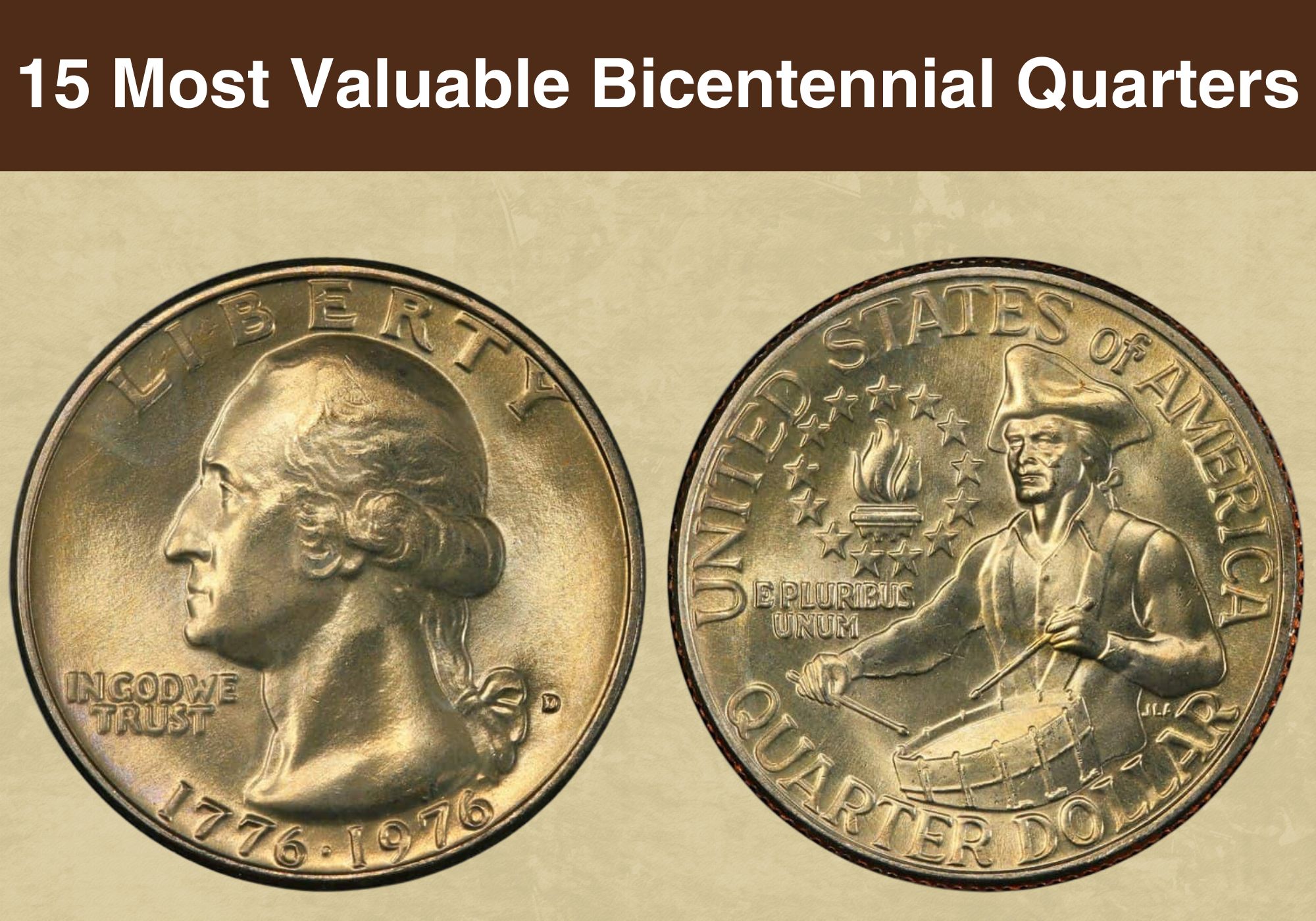
When you’re discussing bicentennials in relation to George Washington, you might mean two different things. One is in 1932, the bicentennial of his birth, which was when he first appeared on a 25c coin. The other is 1976, the bicentennial of American Independence, and marked by a special two-date coin. So let’s confirm the Most Valuable Bicentennial Quarter.
Most Valuable Bicentennial Quarter Worth Money
1. 1976 Clad Bicentennial Quarter Regular Strike
For this list, we’re going to focus on American Bicentennial coins that were minted in 1976. As we said above, each coin had two dates on the front: 1776 – 1976. They refer to America overthrowing British colonialism and setting ourselves up as a self-governing democracy. The Founding Fathers were key figures in this political coup. Seven are especially famous.
- Metal: Type 3 Clad
- Mint Mark: None (Philadelphia)
- Grade: MS 67+
- Date of Sale: 27th March 2023
- Price: $1,821
And since we won our independence through the American Revolutionary War, this was a military victory as well. In fact, many of the Founding Fathers were generals as well as gifted intellectuals. George Washington, one of these visionary leaders, ended up becoming the 1st President of the United States of America. Three others ascended to the presidency after him.
Check 1976 Bicentennial Quarter History, Variety Price Chart & Errors List
2. 1976-S Silver Bicentennial Quarter Business Strike
While statues and tributes were made in his honor, he didn’t want his face to appear on US money. To him, that felt too much like the hubris of the British Royals they had just kicked out. Instead, Washington and Benjamin Franklin preferred to have representatives of liberty. So American coins featured the Goddess of Liberty as a symbol of our American autonomy.
- Metal: Type 4 Silver
- Mint Mark: San Francisco
- Grade: MS 69
- Date of Sale: 9th June 2019
- Price: $19,200
Early on, the image was a template taken from Ancient Greek and Roman muses. Over time, the sculptors used living American women as stand-in models for Lady Liberty, sometimes referred to as Miss Liberty. These included Elsie Stevens on the Mercury Dime, Teresa de Francisi on the Peace Dollar, and Ann Willing Bingham on the earlier Draped Bust Coinage.
Check 1976 Bicentennial Quarter History, Variety Price Chart & Errors List
3. Double Denomination 1976 Bicentennial Quarter Struck on a Dime
A less enthusiastic model was Anna Willess Williams, who posed for the Morgan Dollar but didn’t want to be outed. Since the initial coins were driven by practicality, they weren’t fancy or pretty. But in 1904, the sitting president, Theodore Roosevelt, demanded currency that was beautiful as well as valuable. That led to the US president being depicted on US money.
- Metal: Type 3 Clad
- Mint Mark: None (Philadelphia)
- Error: Bicentennial Quarter Struck on a Dime
- Grade: MS 62
- Date of Sale: 15th December 2020
- Price: $9,200
They started with Abraham Lincoln on the 100th anniversary of his birth, 1909. This set a precedent, so in 1932, two centuries after George Washington’s birth, he was officially placed on the 25-cent coin, and he still maintains that position today. But 1976 was a special event, and ARBC plans – including a commemorative coin and nationwide contest – began in 1966.
Check 1976 Bicentennial Quarter History, Variety Price Chart & Errors List
4. 1976-S Clad Proof Deep Cameo Bicentennial Quarter
The idea was to celebrate 200 years of American Independence with special anniversary coinage. The Mint coined currency in the three largest circulating denominations: a quarter (25c), a half dollar (50c), and a dollar ($1). The coins included both clad coins for circulation and silver coins sold to collectors as Bicentennial Sets. They also made proof sets of six coins.
- Metal: Type 3 Clad Proof
- Mint Mark: San Francisco
- Grade: PR 70 DCAM
- Date of Sale: 8th July 2010
- Price: $920
Silver bicentennial coins were 90% silver and 10% copper while the clad coins had the usual proportion of circulating coins i.e. 91.67% copper and 8.33% nickel. This combination had a pure copper core plated with a mix of 75% copper and 25% nickel. That way, the coins were as shiny as the original silver coins but cost a fraction to produce and improved mint coffers.
Check 1976 Bicentennial Quarter History, Variety Price Chart & Errors List
5. 1976-S Clad Proof Bicentennial Quarter
To understand this point, you need to consider seignorage. This is a tax that’s calculated by subtracting the cost of money from its face value. Just as an example, let’s say a $1 coin costs 90 cents to make. This price is based on its metal content, labor rates, electric expenses, utility bills, machine repair, etc. The coin is then ‘sold’ to banks for $1 with 10 cents as a tax.
- Metal: Type 3 Clad Proof
- Mint Mark: San Francisco
- Grade: PR 69
- Date of Sale: 3rd November 2010
- Price: $6,038
That 10-cent tax is what we refer to as seignorage, and it’s a huge source of revenue for the US Mint. It’s why they continually seek cheaper methods to mint coins and dollar bills so they can raise revenue. Today, all coins are made digitally, saving the mint millions of dollars and significantly enhancing seignorage. Proofs and collectible coins provide extra income.
Check 1976 Bicentennial Quarter History, Variety Price Chart & Errors List
6. 1976-S Silver Proof Deep Cameo Bicentennial Quarter
The metals used on coins and their connection to seignorage is affected by many different factors. These include the 1850s Gold Rush, the 1960s Coin Shortage, and spiking silver and copper prices at various periods in US history. The War Years also influenced nickel usage that was diverted for military use. In the case of Bicentennial Coins, it was a silver thing.
- Metal: Type 4 Silver Proof
- Mint Mark: San Francisco
- Grade: PR 70 DCAM
- Date of Sale: 29th November 2007
- Price: $2,760
Since the coin shortage of the 1960s, silver had gradually been removed from regular strikes, replacing it with a mix of copper and nickel. Dollars remained silver, but they were rarely used in daily transactions. In 1965, the silver in quarters reduced from 90% to 40%. Then from 1971, they shifted to a pure copper core coated with a 75% copper and 25% nickel mix.
Check 1976 Bicentennial Quarter History, Variety Price Chart & Errors List
7. 1976-S Silver Proof Bicentennial Quarter
Going forward, circulating American coins employed this alloy, which totaled 91.67% copper and 8.33% nickel. Some Bicentennial Quarters use the original metal mix with its 90% silver content. This means in addition to their historical merit, these Bicentennial Quarters have a greater melt value. The melt value is based on the market price of silver multiplied by weight.
- Metal: Type 4 Silver Proof
- Mint Mark: San Francisco
- Grade: PR 25
- Date of Sale: 26th March 2019
- Price: $13,500
All bicentennial coins were dated 1776-1976 but in reality, they were minted in 1975 and 1976. No bicentennials were ever dated 1975. At the time, these coins had Washington, JFK, and Eisenhower on their obverse (i.e. the heads side of the coin). These obverse devices were maintained. For reference, a device is an image, bust, picture, or symbolic portrait on a coin.
Check 1976 Bicentennial Quarter History, Variety Price Chart & Errors List
8. 1976-D Clad DDO Bicentennial Quarter Business Strike
In contrast, the words are known as legends or mottos, and the backdrop of the coin is called its field. The thinnest side of the coin is called the edge. If it has raised ridges aka reeds, it’s called a reeded coin. If not, it’s a smooth or plain coin. Some coins e.g. bullion coins have a combination of smooth and reeded edges e.g. 2016-W American Silver Eagle Special Strike.
- Metal: Type 3 Clad
- Mint Mark: Denver
- Error: Doubled Die Obverse
- Grade: MS 66
- Date of Sale: 7th May 2023
- Price: $8,400
This 30th Anniversary coin alternates smooth sections with reeded sections to accommodate the 30th Anniversary Edge Lettering. But let’s get back to Bicentennial Coins. As we said, some were sold in Proof Sets and Uncirculated Sets with six coins each – one from each circulating denomination. Others were sold as Bicentennial Sets with a dollar, 50c, and 25c.
Check 1976 Bicentennial Quarter History, Variety Price Chart & Errors List
9. 1976-S Clad Proof Cameo Bicentennial Quarter Minted in 1975
This is important when you’re assessing the most valuable bicentennial quarter because the bicentennial sets were more prized and would be kept in better condition. They’d probably be in display cases with protective covers. But Proof Sets and Uncirculated Sets might be broken up for the other denominations to be resold individually. Particularly the clad coins.
- Metal: Type 3 Clad
- Mint Mark: San Francisco
- Grade: PR 70 CAM
- Date of Sale: 29th April 2021
- Price: $150
But we’re getting ahead of ourselves. Let’s go back to the reverse design of the bicentennial quarter. It’s sometimes called the Drummer Boy Quarter because it features a military drummer. Their role was to provide a marching rhythm and assist with the timing of loading and reloading weapons. They also helped maintain the morale of the infantry (foot soldiers).
Check 1976 Bicentennial Quarter History, Variety Price Chart & Errors List
10. 1976-S Clad Proof Deep Cameo Bicentennial Quarter Minted in 1975
Another key element on the reverse (tails side) of the Bicentennial Quarter is the victory torch on the upper left, enclosed in a circle of 13 stars to represent the first 13 States to join the newly formed Union. This design was done by contest winner Jack L. Ahr. His initials, JLA, are on the lower right of the coin, under the drummer’s arm, just before the R in Dollar.
- Metal: Type 3 Clad
- Mint Mark: San Francisco
- Grade: PR 69 DCAM
- Date of Sale: 14th July 2021
- Price: $342
The other two contest winners were Seth Huntington who designed the Bicentennial Half Dollar and Dennis R. Williams who did the Bicentennial Dollar. He was only 21 and made the sketch for a school art project before submitting it to the competition. His successful class assignment made him the youngest person to ever design a circulating American coin.
Check 1976 Bicentennial Quarter History, Variety Price Chart & Errors List
11. 1976-S Silver Proof Cameo Bicentennial Quarter
Let’s talk a little more about the contest. The prize was $5,000 for the winners and $750 for the 12 semi-finalists. The Mint Director traveled all over the country to encourage entries, and artists were asked to send a photo or drawing of their design. It should be a 10-inch model of either a quarter, half dollar, or dollar with all the legal legends on the coin’s back.
- Metal: Type 4 Silver Proof
- Mint Mark: San Francisco
- Grade: PR 66 CAM
- Date of Sale: 15th February 2021
- Price: $128
They had to have E Pluribus Unum, the denomination, and United States of America, as well as the two dates, 1776-1976 balanced with their chosen design. The December deadline was extended to January, and the mint received 15,000 queries and 884 entries. Ahr was accused of plagiarism by William A. Smith, who had designed a drummer boy stamp. He denied it.
Check 1976 Bicentennial Quarter History, Variety Price Chart & Errors List
12. 1976 Clad Bicentennial Quarter Minted in 1975
Is there a fundamental difference between Bicentennial Quarters and other commemorative coins? Yes, and it goes back to that first Washington Quarter. At the time, President Herbert Hoover was against celebratory coins in general. Before winning the White House, he was the Secretary of Commerce, so fiduciary matters were important to him. Especially wastage.
- Metal: Type 3 Clad
- Mint Mark: None (Philadelphia)
- Grade: Brilliant Uncirculated
- Date of Sale: 9th August 2022
- Price: $43
He noted that commemorative coins weren’t selling well in the 1930s so they weren’t worth the expense. He went as far as to veto the Washington Coin Bill. So its supporters opted to make a circulating coin instead of a collectible one. And Bicentennial Coinage faced the same controversy. Mint Director Mary Brooks disliked the idea of redesigning six separate coins.
Check 1976 Bicentennial Quarter History, Variety Price Chart & Errors List
13. 1976-S Clad Proof Cameo Bicentennial Quarter
To her, it seemed extravagant to remake six coins for a couple of years. Especially since this would involve a whole new set of dies, hubs, and planchet sheets. But she later joined the cause once it was agreed to only change the reverse designs, meaning the obverse equipment would stay unchanged except for the date. This compromise would save a ton in seignorage.
- Metal: Type 3 Clad Proof
- Mint Mark: San Francisco
- Grade: PR 70 CAM
- Date of Sale: 4th May 2004
- Price: $63
But the issue of commemorative coin sales remained. The mint made 45M silver bicentennial coins – 15M per denomination. They managed to sell a little over half and melted down the rest. That said, clad bicentennial coins exist in spare change and coin rolls to date. But how did these commemorative coins work in the first place? They were often attached to a group.
Check 1976 Bicentennial Quarter History, Variety Price Chart & Errors List
14. 1976-D Clad Bicentennial Quarter Regular Strike
A designated organization would lobby for the mintage of the coin, buy it at face value, and sell it at a premium to raise funds. For example, the Roosevelt Dime supported FDR’s March of Dimes. But these earnings were often misused, creating distrust among the public and at the mint. This was a big deal since tax money was used to mint the coins in the first place.
- Metal: Type 3 Clad
- Mint Mark: Denver
- Grade: MS 68
- Date of Sale: 4th January 2017
- Price: $6,463
By setting a commemorative coin as a circulating one, the funds would come back into the economy, so it would feel like less of a waste. Plus, since they wouldn’t be stashed in private collections, the coins could always be melted down and recycled for future currency. This line of thought allowed bicentennial coinage to be produced and released without too much fuss.
Check 1976 Bicentennial Quarter History, Variety Price Chart & Errors List
15. Double Denomination Bicentennial Dollar Over Bicentennial Quarter
While the leftover silver bicentennials were eventually melted, they stayed on sale for 10 years until 1986. Usually, a set price is announced for the coins, and if they don’t sell out, they’re discounted until they do. Some end up entering circulation at face value, so you might find them in your change and resell for profit before they get recalled and melted en masse.
- Metal: Type 4 Silver
- Mint Mark: None (Philadelphia)
- Error: 1976 Ike Dollar Struck on a 1976 Quarter
- Grade: MS 64
- Price: $28,000
This is part of the reason why commemorative coins have lost public support. And Mary Brooks, the Mint Director, had favored a gold piece or a half cent instead of disrupting the circulating coinage. But the ARBC (American Revolutionary Bicentennial Committee) won her over eventually, and as we said, many of the clad bicentennial coins are still in active use.
Check 1976 Bicentennial Quarter History, Variety Price Chart & Errors List

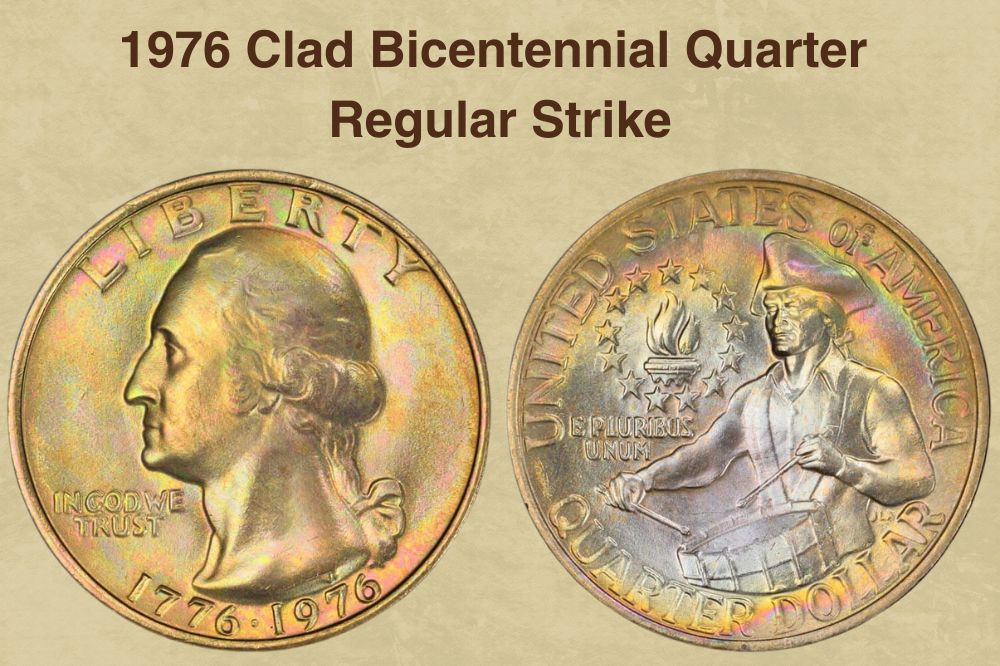
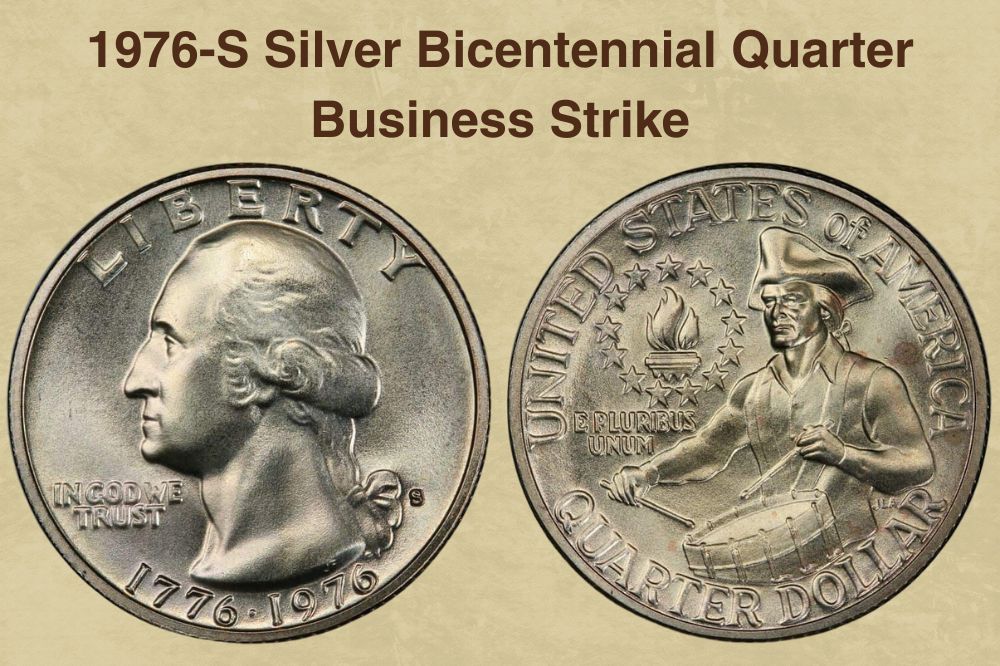
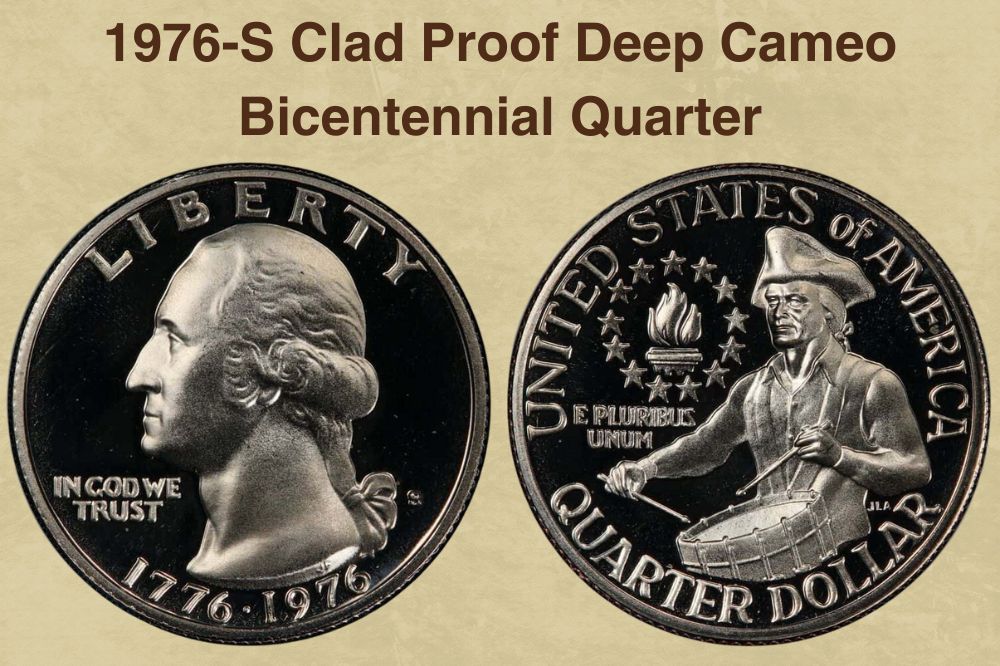
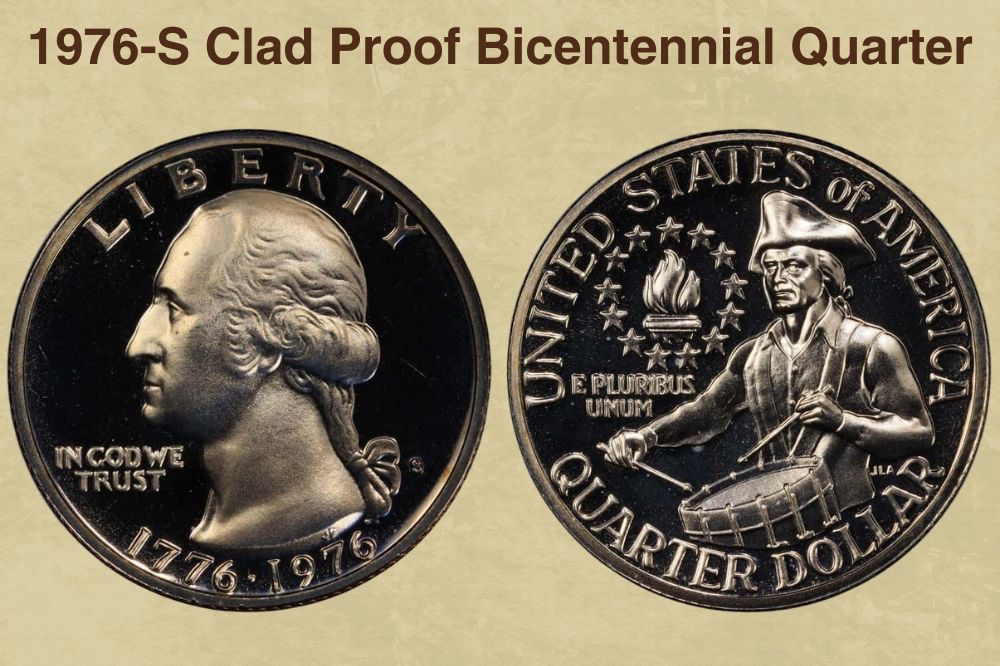
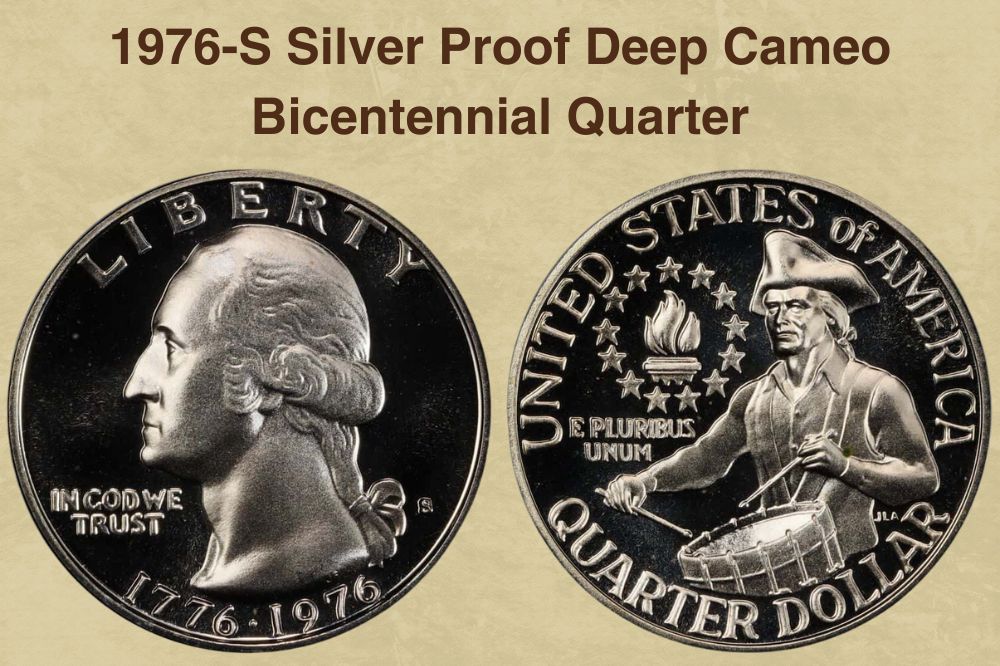
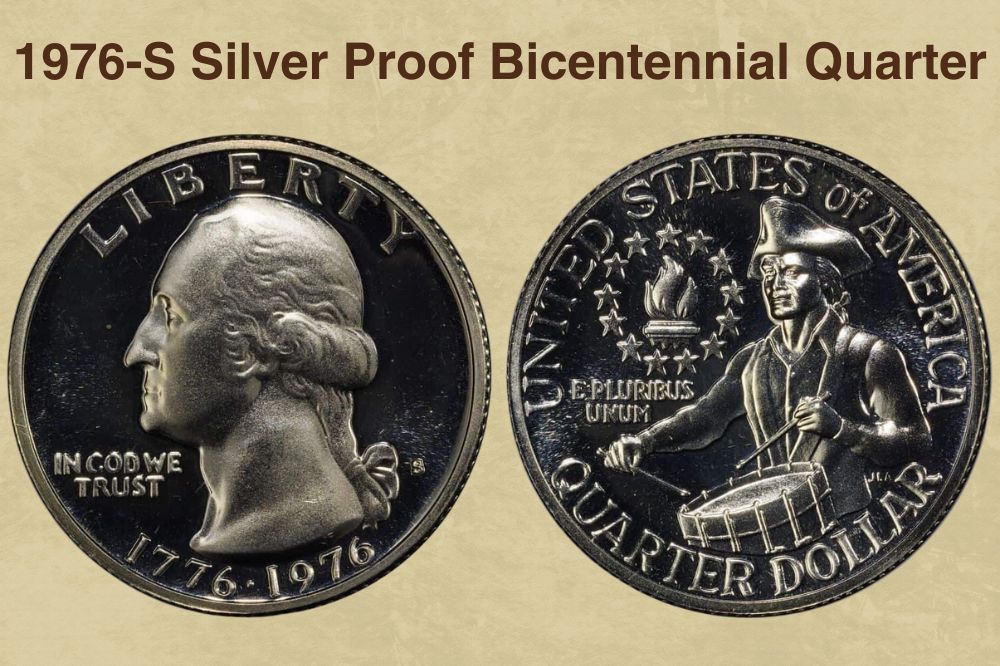
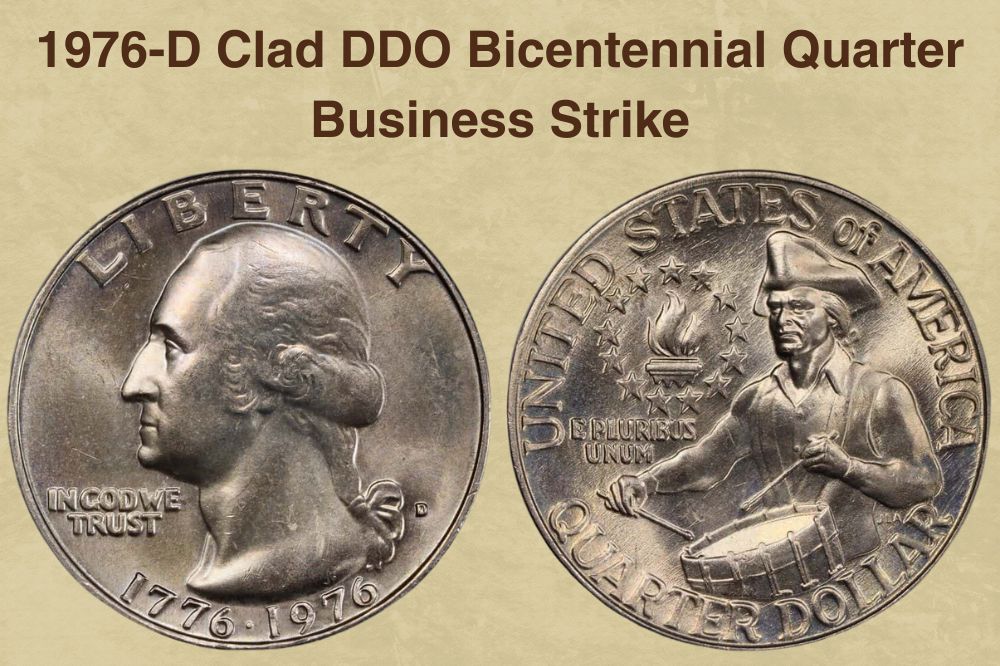
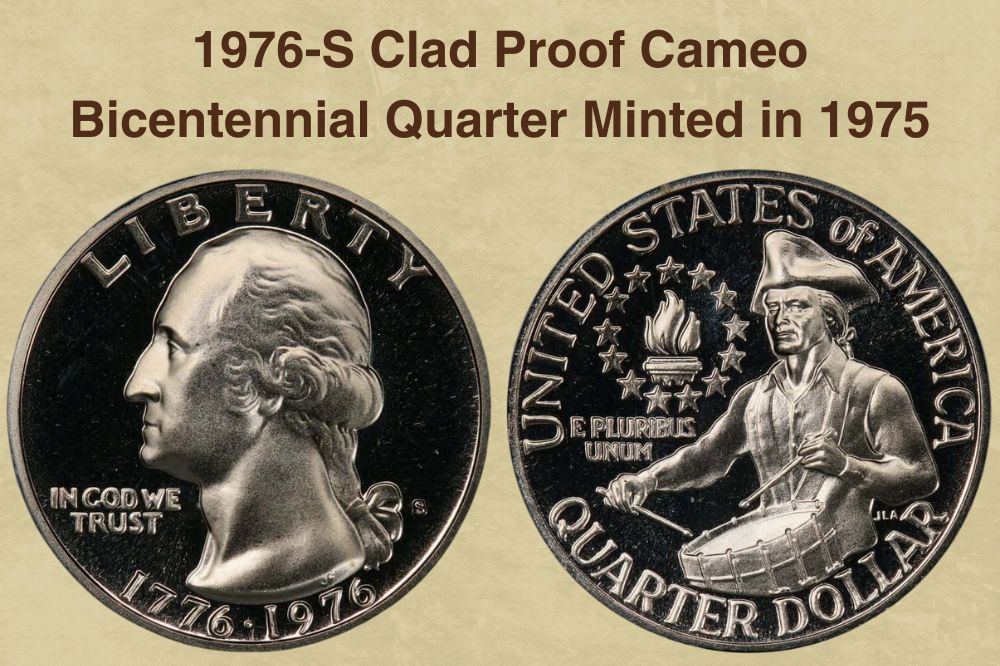
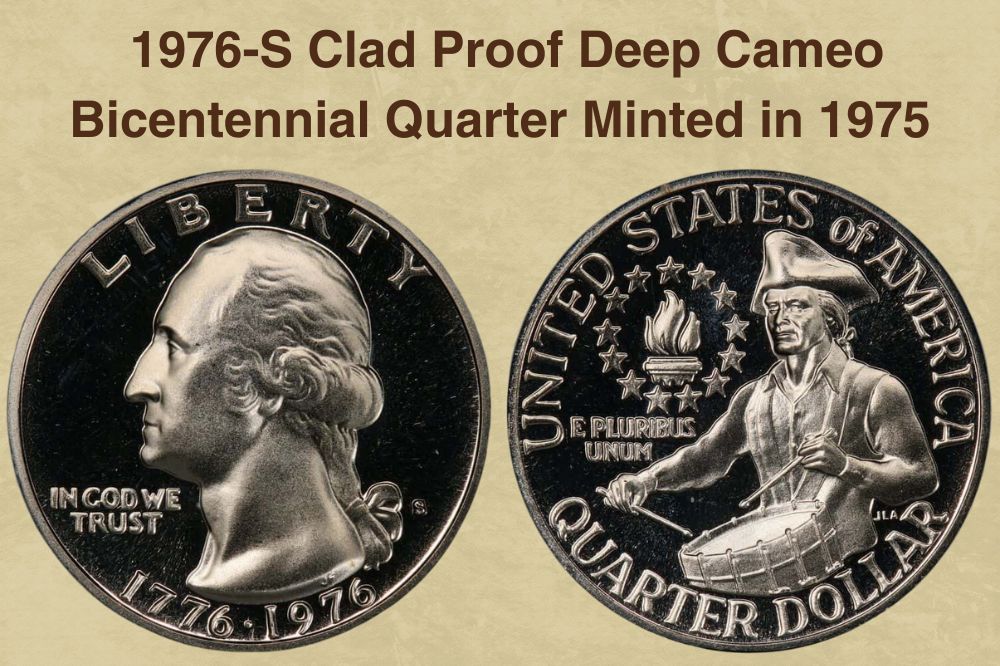
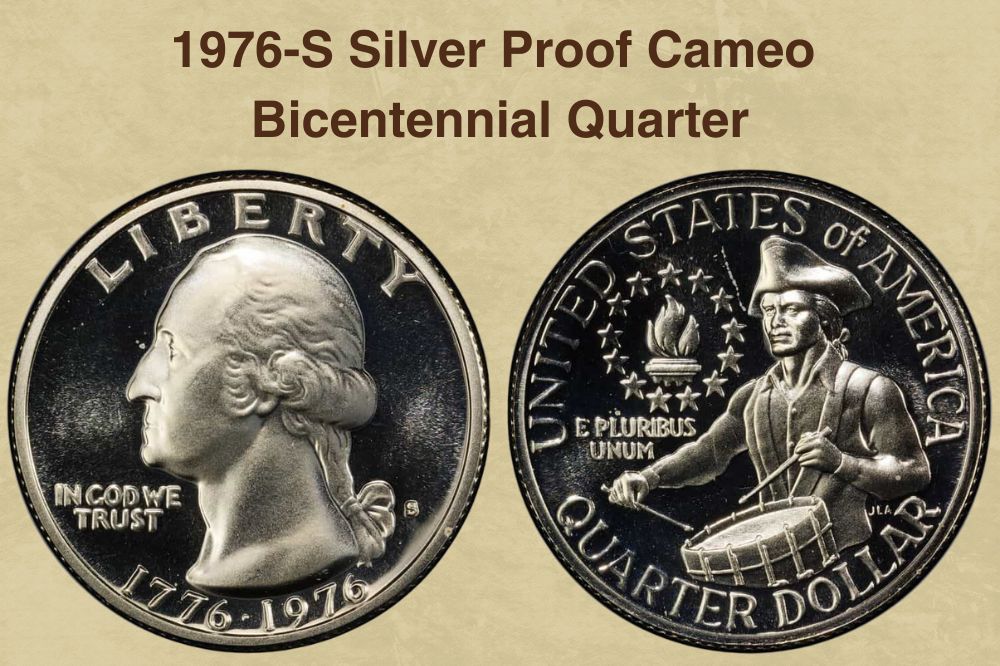
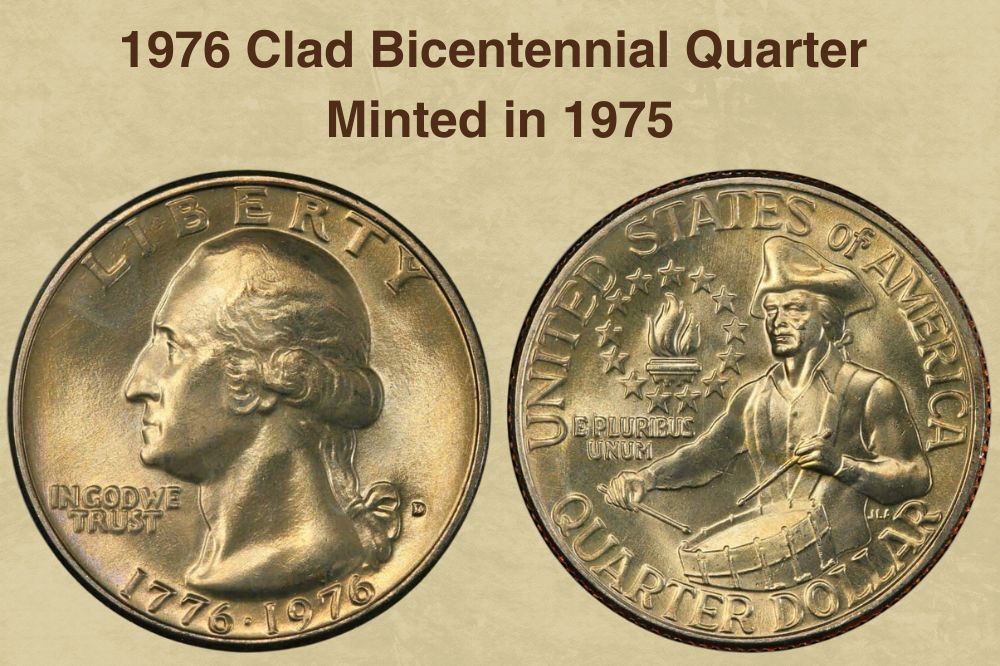
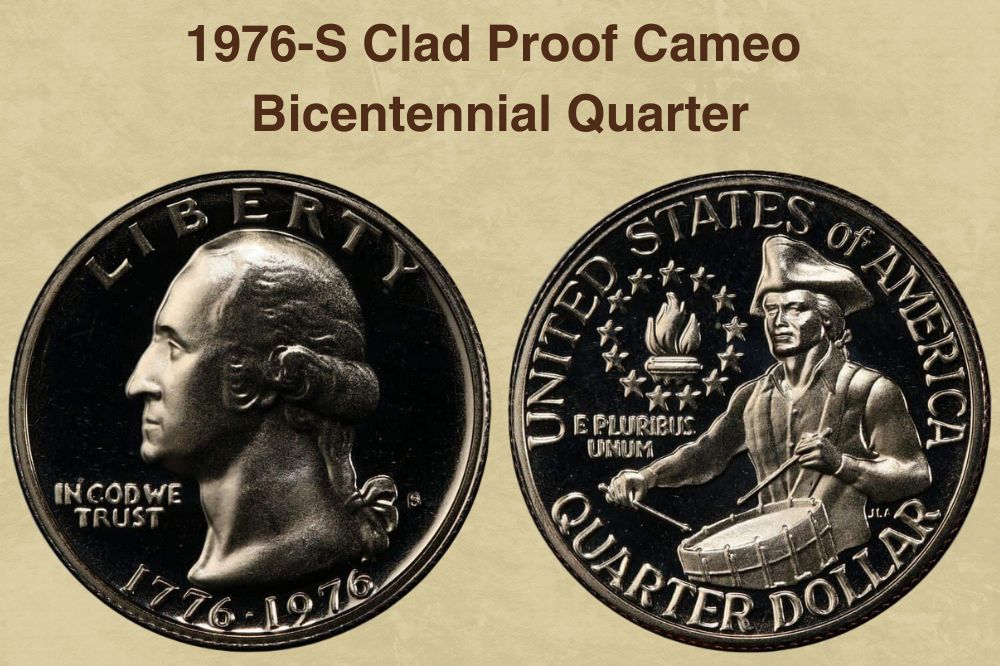
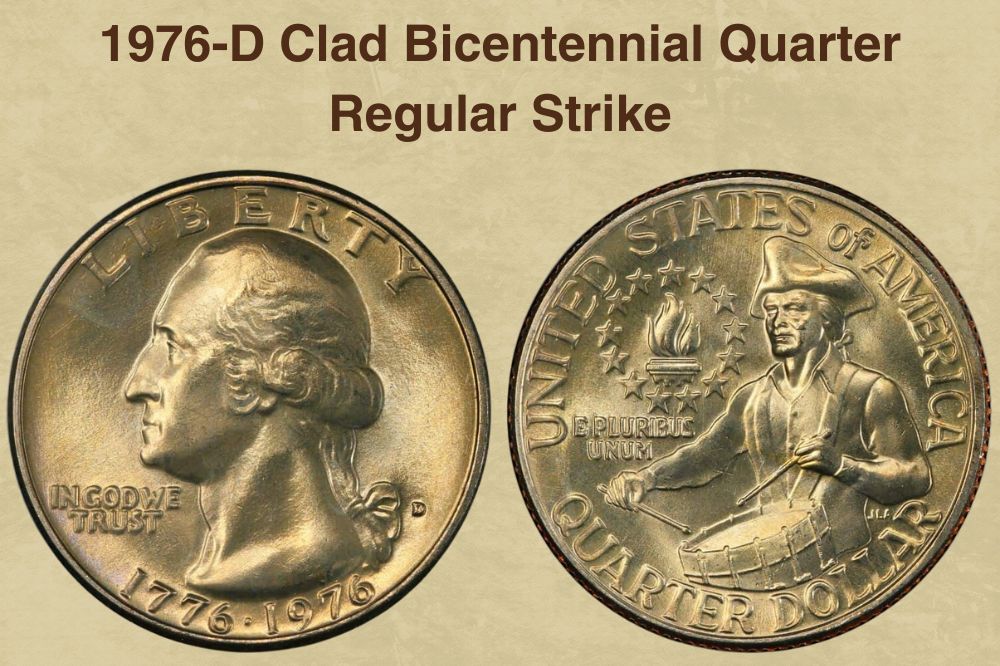
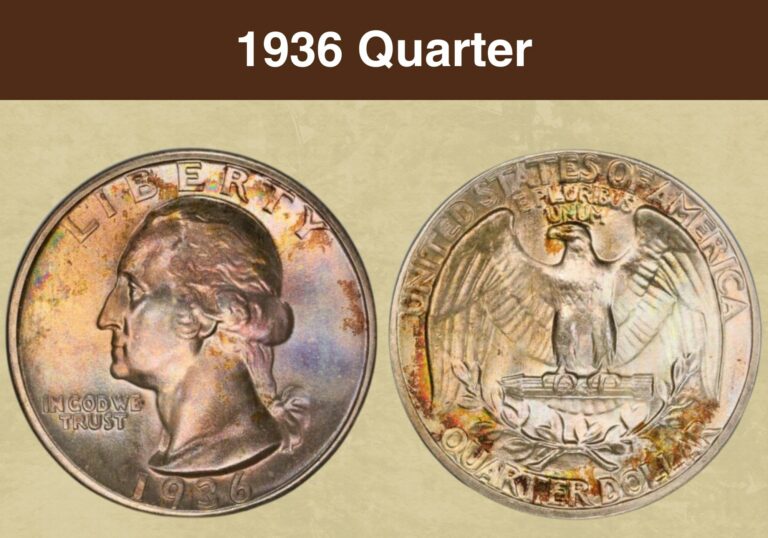
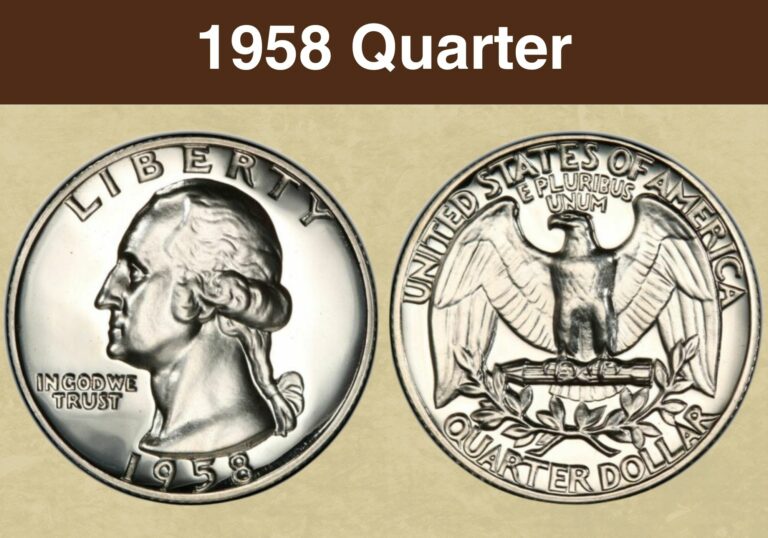
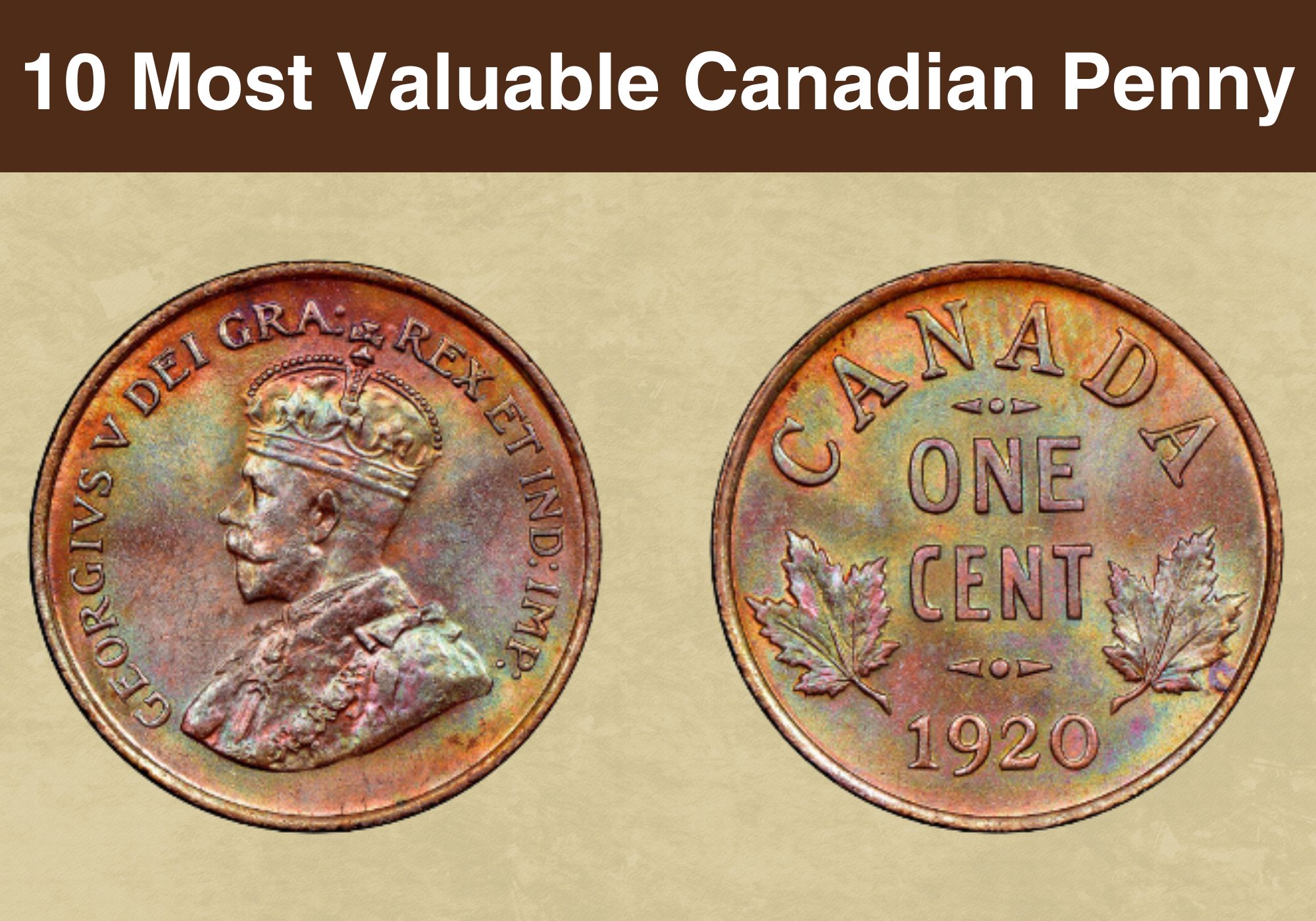
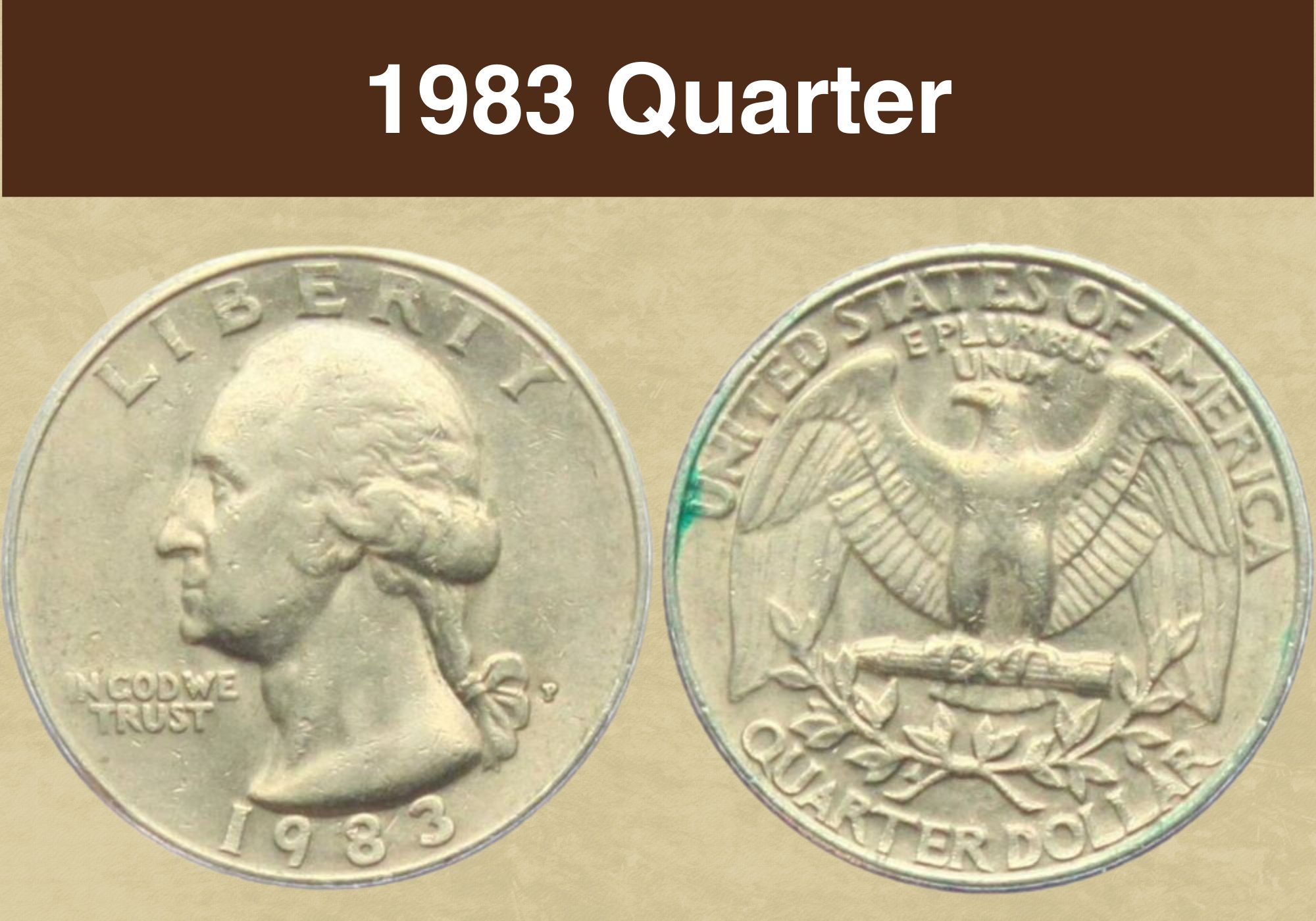
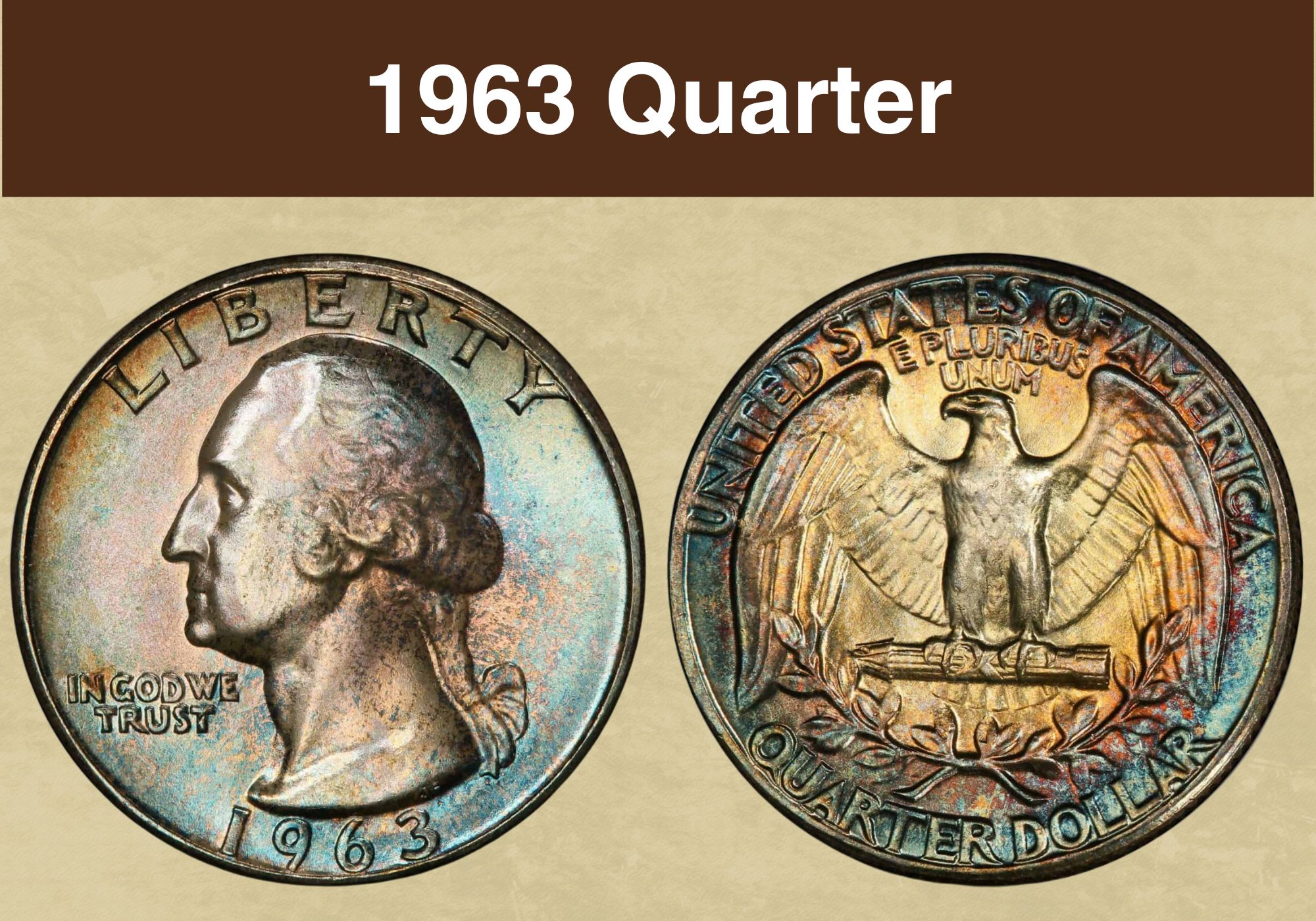
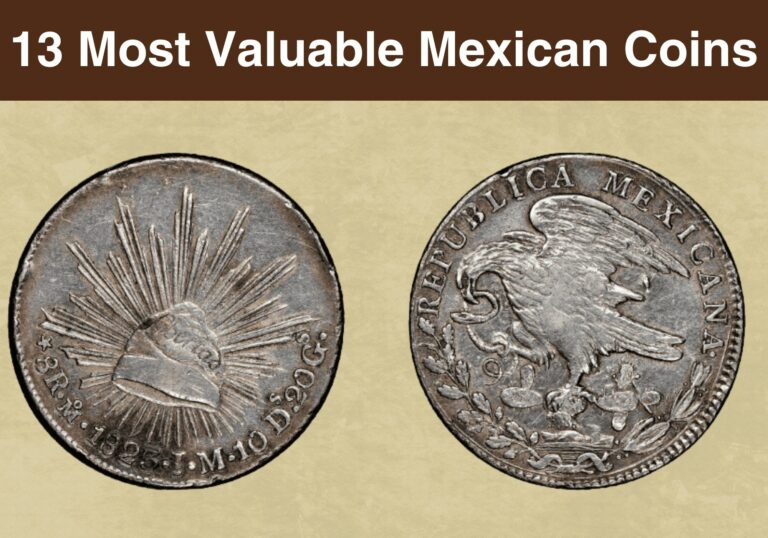
I have 16. Still not sure how to tell if they are valuable.
I have serval bicentennial quarters. What they worth? An where you sale them ?
I have several bicentennial quarters s couple I think are errors. I can send pictures with response to this email if need be. Thank you in advance for any help.